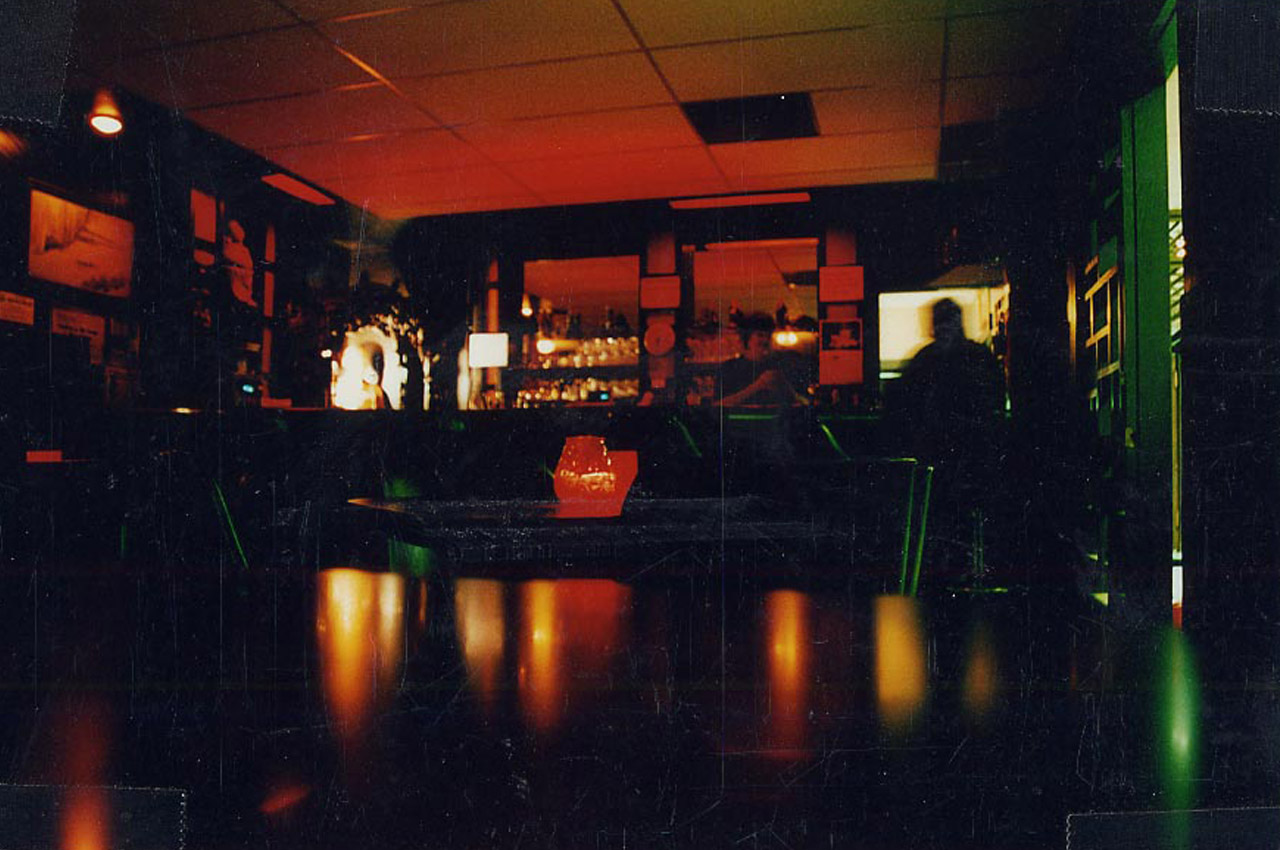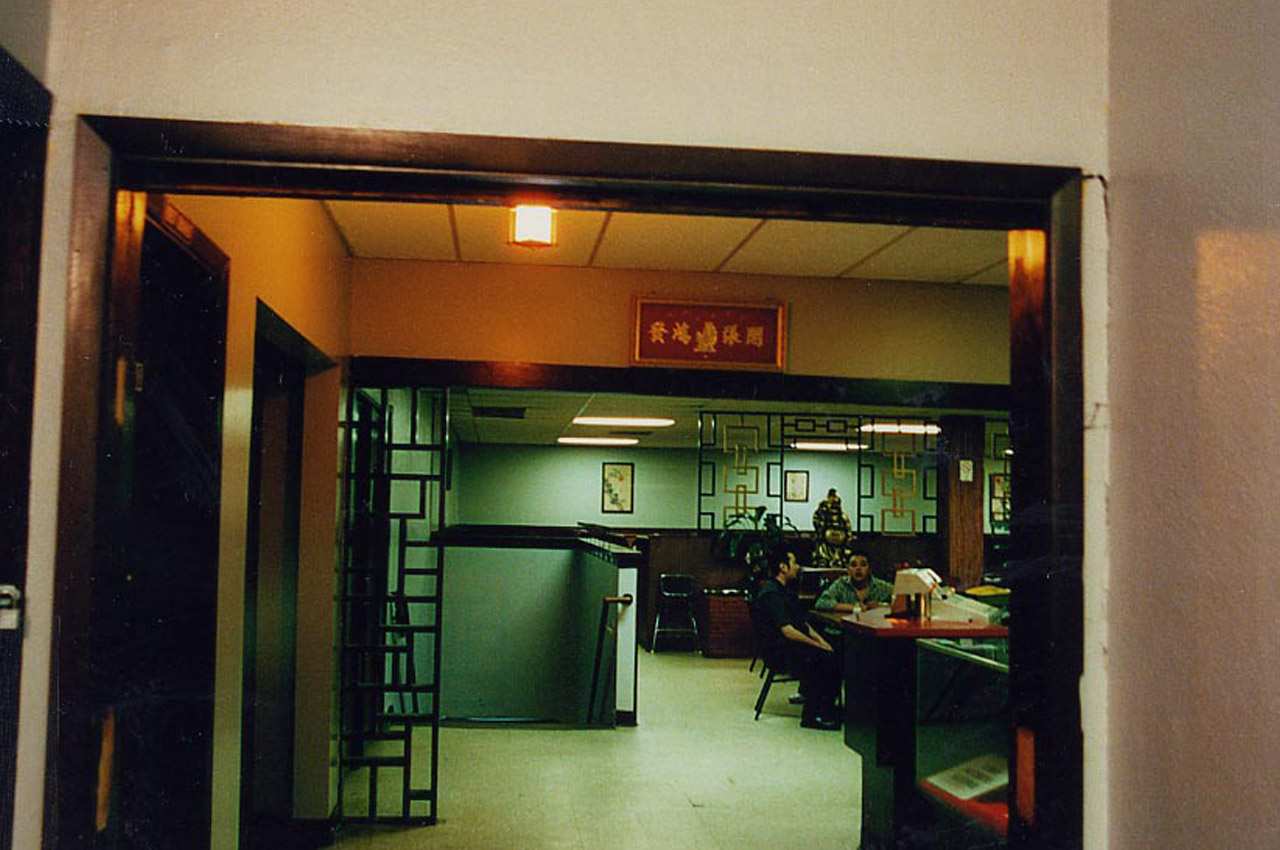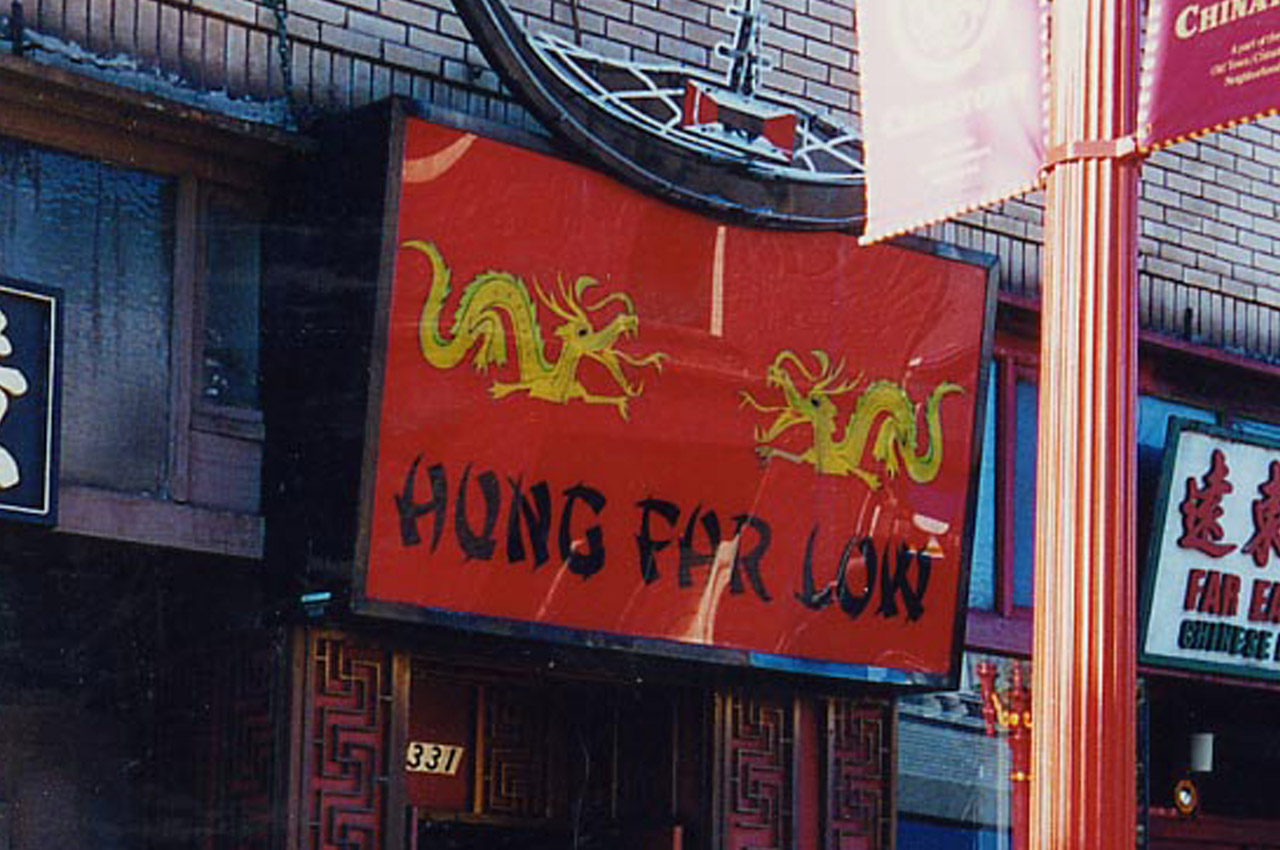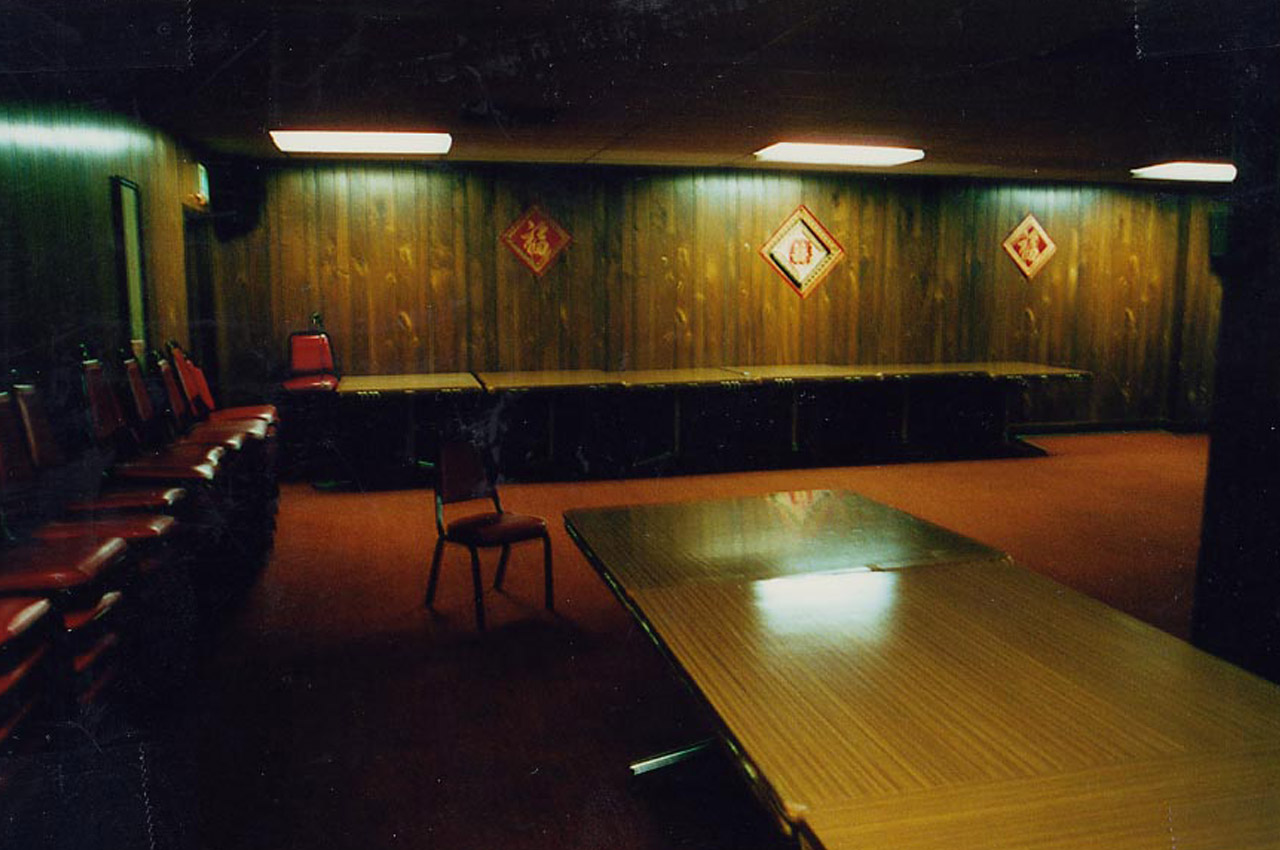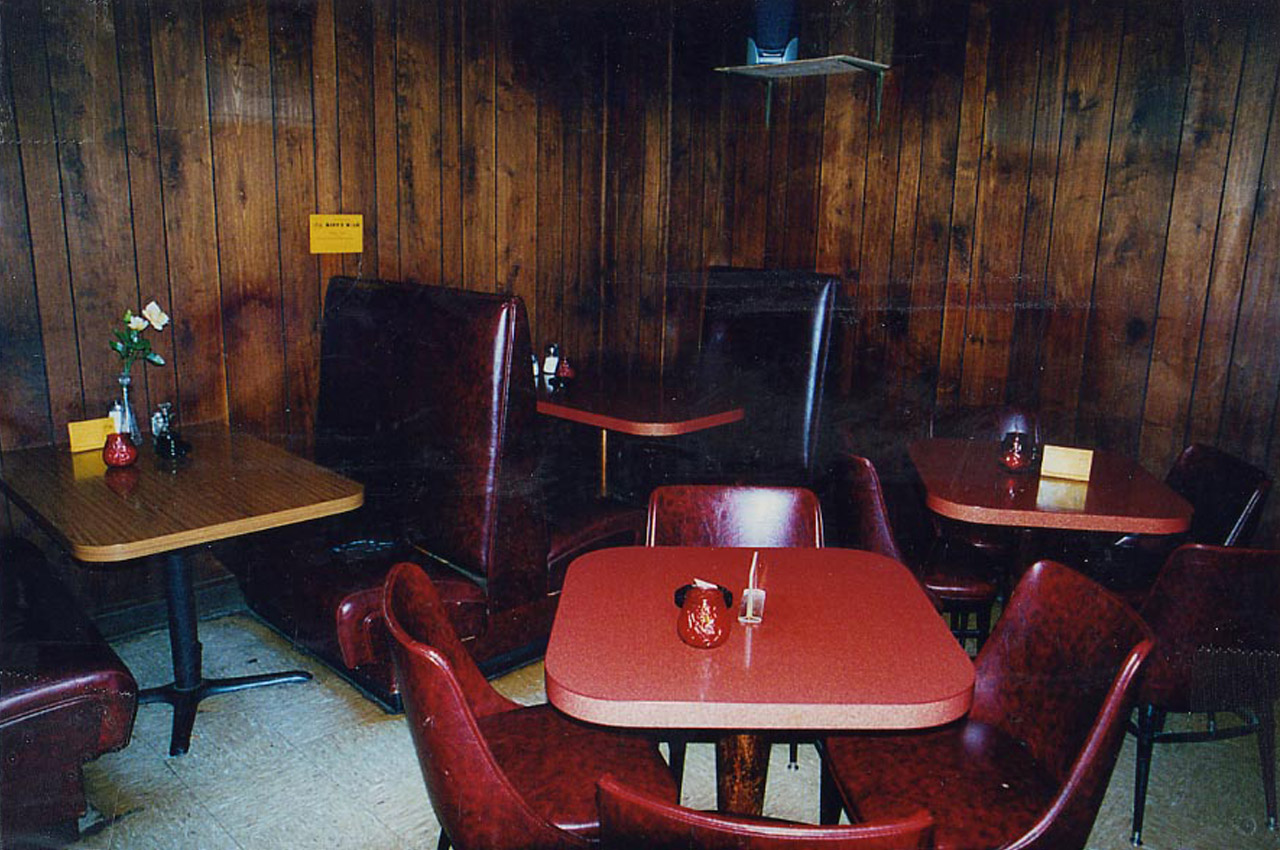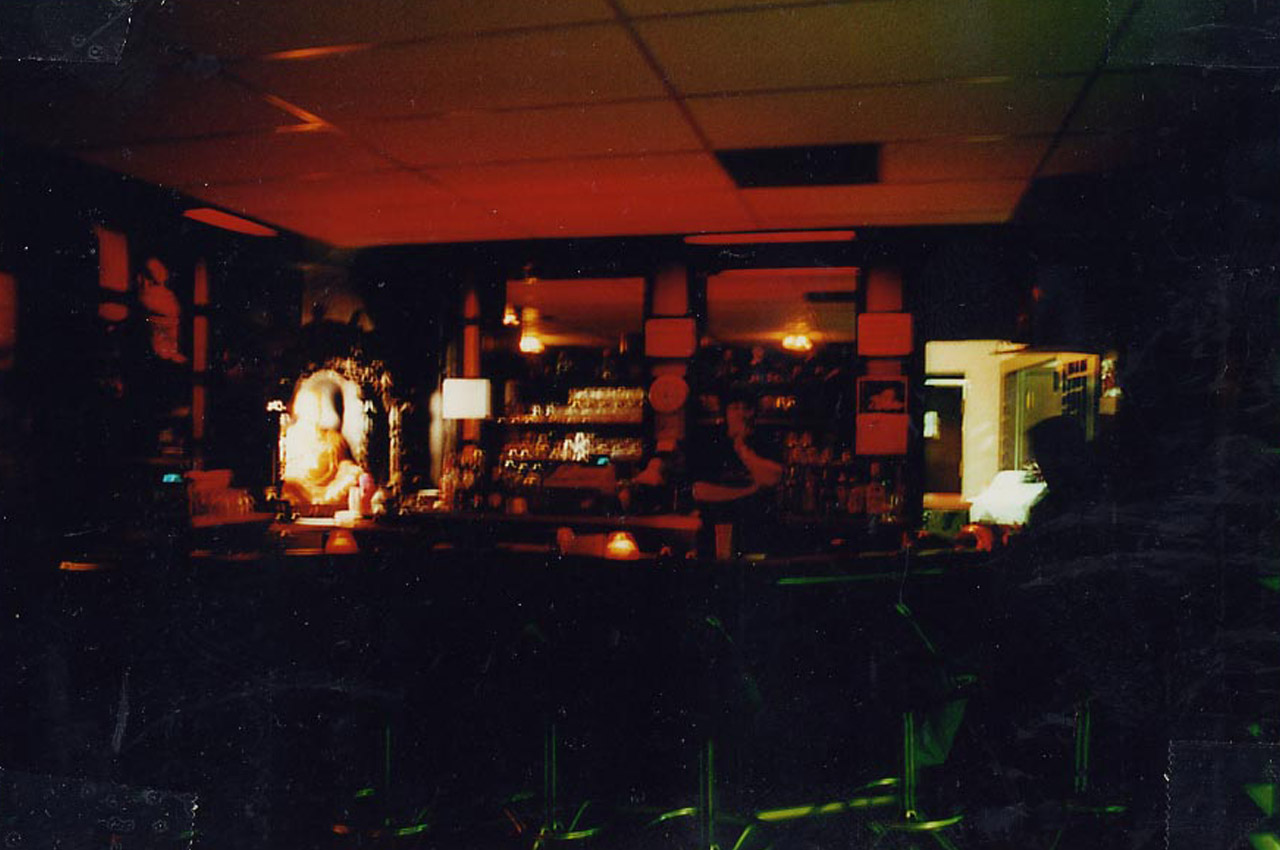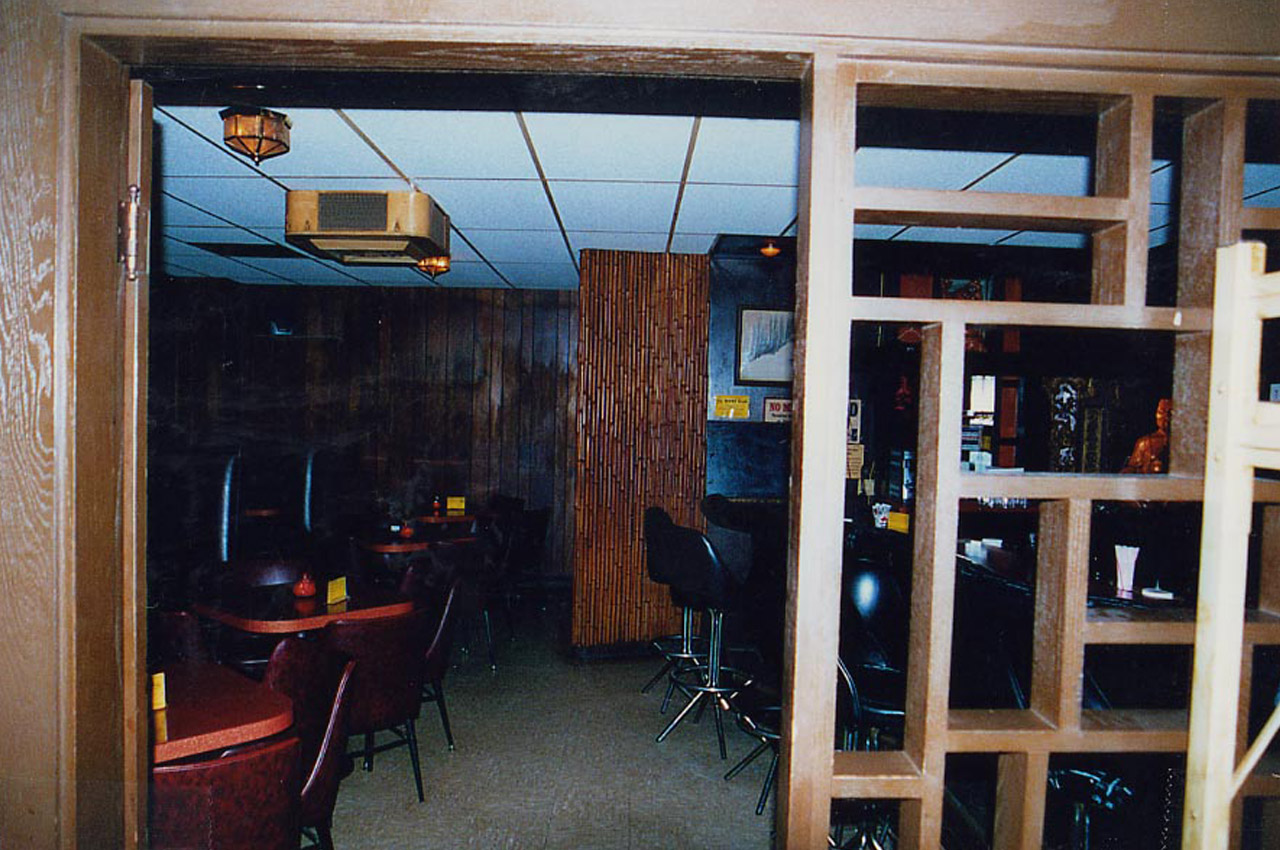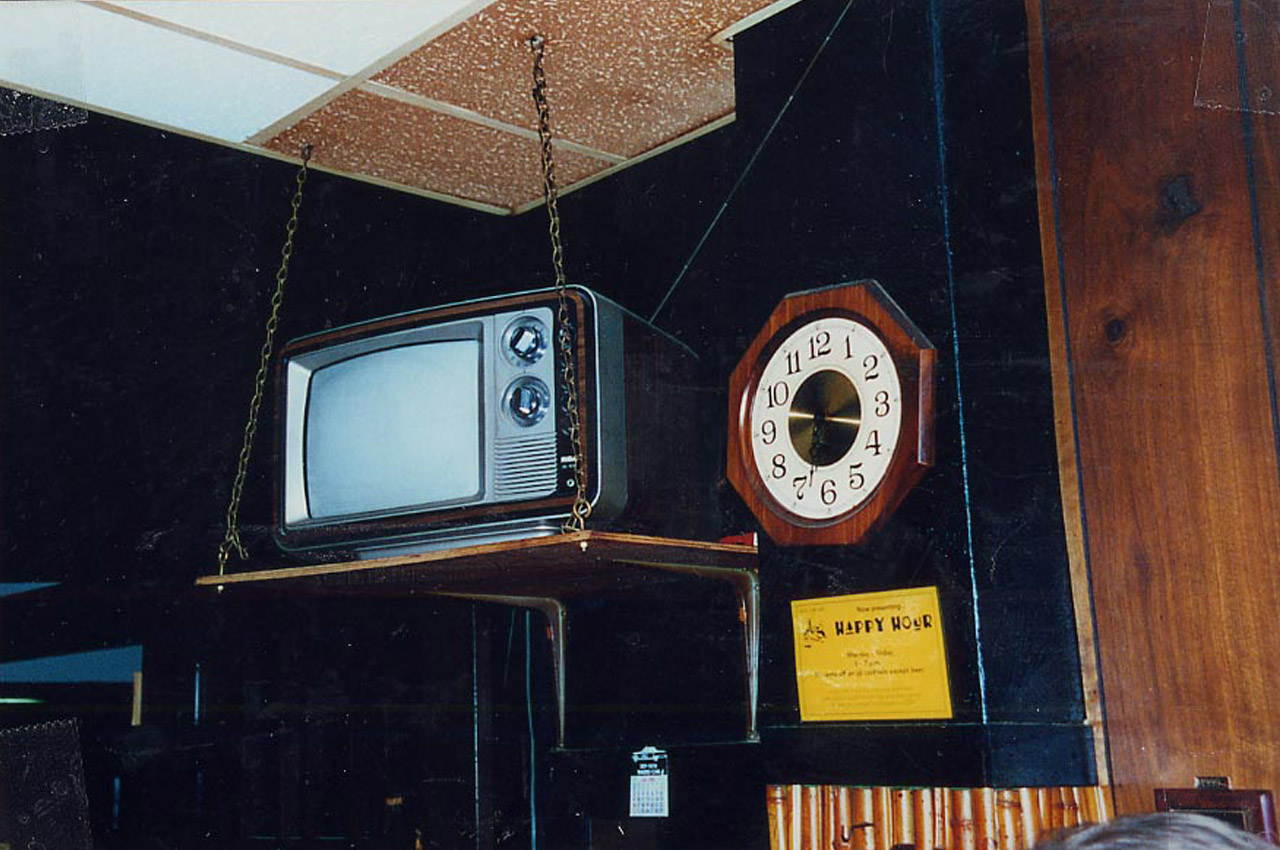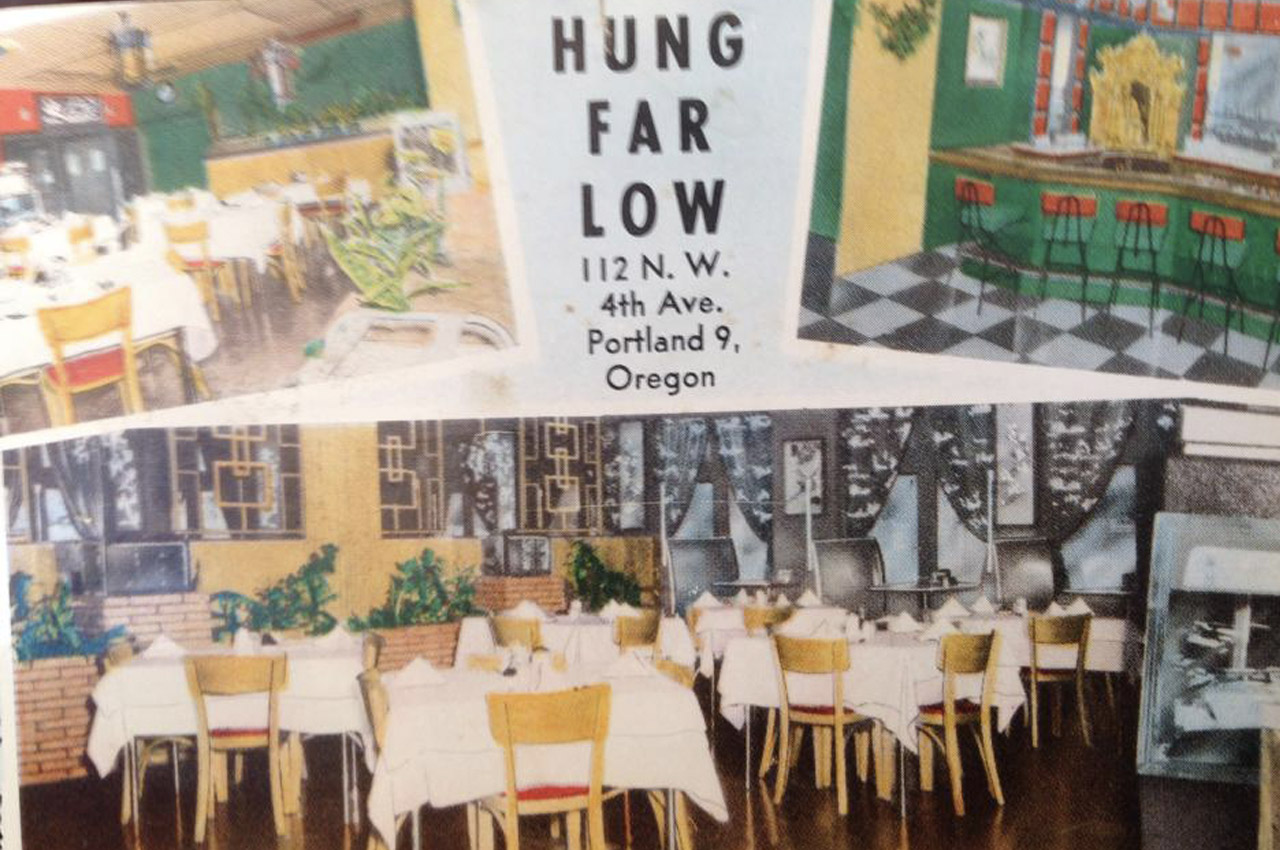Hung Far Low
杏花樓
Portland’s oldest Chinese restaurant, operated for 87 years and became a symbol of resilience.
Hung Far Low (杏花樓: Almond Blossom Tower) stands as a storied emblem of Portland’s Chinese-American heritage, captivating a devoted following with its pulp-fiction-like ambiance and unique reputation.
Its intriguing name traces back to a 1917 posting in The Oregonian, when a business named Hung Far Low advertised for a waitress at its location on the edge of Old Chinatown, just south of W. Burnside. Over time, the name evolved in popular perception, coming to be associated with meanings far removed from its original Chinese interpretation.

The restaurant operated in Old Chinatown (1863 - 1900), in a bustling hub where over 5,000 Chinese lived and worked. For unspecified reasons, the original establishment did not last long. Meanwhile, due to fires, floods, political pressure, and urban displacement, the Chinese community gradually moved north of W. Burnside, an area that would later be known as New Chinatown.
In 1928, Wong On inaugurated a new chapter for Hung Far Low at the corner of NW 4th Avenue and NW Couch Street in New Chinatown. From 1928 until 2005, the restaurant flourished as a beloved chop suey house, becoming synonymous with the cultural and culinary vibrancy of Old Town/Chinatown. Under Wong On’s guidance, Hung Far Low emerged as a destination for Chinese families and adventurous non-Chinese diners alike. Its signature dishes, including the famed Beef Tomato Chow Mein, attracted a loyal following from across Portland, establishing the restaurant as a cornerstone of social and cultural life.
Its iconic neon sign, once prominently displayed on the building’s second-floor corner, remains a rare historical relic. With today’s building codes and stringent design guidelines for this historic district, a monumental neon sign as such is no longer possible. In early 2010, buoyed by community support, the owners of PING and Prosper Portland secured a $77,000 grant to restore the aging sign to its former glory. However, after the original cook acquired the business from the Wong family and relocated it to the Jade District, he left behind the celebrated neon sign—preserved under the building owner’s contractual rights—and the second-floor restaurant space has remained unoccupied. Ongoing challenges related to fire safety, seismic standards, and accessibility requirements have ensured that this space remains vacant to this day.
1917
1928
1989
2005
2015
First mention in The Oregonian (job advertisement).
Opening of Hung Far Low in New Chinatown.
New Chinatown designated as a National Historic District.
Relocation to SE Division and 82nd Ave.
Final move to Longview, WA, and subsequent closure.
The designation of New Chinatown as a National Historic District in 1989 brought renewed hope for revitalizing this treasured cultural hub. In the early 2000s, the city embarked on a multimillion-dollar streetscape beautification project aimed at preserving the historic character of the area. However, the ensuing 18-month construction period disrupted local businesses, with Hung Far Low among those forced to either relocate or close.
Amid these challenges, Wong On’s family eventually sold Hung Far Low to their chef, Mr. Chen, who moved the restaurant in 2005 to the Jade District at the northeast corner of SE Division and 82nd Ave.
In 2015, Hung Far Low changed hands and moved again to Longview, Washington, before closing its doors for good. Though the restaurant no longer operates, its historic neon sign remains a landmark in Portland’s New Chinatown, preserved as a testament to its enduring legacy.
Wong On, the founder of Burnside Café, The Republic Café, and Hung Far Low in New Chinatown, played a pivotal role in shaping Portland’s Chinese-American culinary scene. Regrettably, much of Hung Far Low’s early history remains undocumented, and direct descendants of Wong On are not available for interviews. Nevertheless, our research team had the privilege of speaking with Gloria Wong—wife of Bruce Wong, Wong On’s grandson—and Fred Wong, the son of Wong On’s trusted bookkeeper and CPA. Both Gloria and Fred remain deeply committed to preserving the rich history and culture of Portland’s Chinese community through their dedicated volunteer efforts.
Gloria Wong shared vivid memories of her deep connection to Hung Far Low, recounting experiences from her teenage years in the 1940s to her family’s enduring efforts in preserving Chinese culture in Portland.
Video summary:
- Gloria Wong shares her personal connection to Hung Far Low—from its role as a cherished gathering place for family banquets to the generational shift as her family moved beyond the restaurant industry, all while emphasizing the enduring values of respect and equality.
Fred Wong, the son of Wong On’s trusted friend and bookkeeper, secured an opportunity to gain work experience at HFL as a young busboy, similar to many other children of Wong On’s associates.
Video summary:
- Hung Far Low not only provided opportunities for first-generation immigrants—often starting as busboys—but also became a vibrant gathering spot for college students from Reed and Lewis & Clark. Its unique ambiance, with blocked windows, steep stairs, a darkened dining space, and the inviting Temple Lounge serving “healthy drinks”(recalled by Gloria's son, Dr. Scott Wong), made it especially popular with late-evening young patrons.
Signature dishes such as Beef Tomato Chow Mein and Egg Fu Young became staples that attracted loyal diners for decades. Perfected by skilled chefs, these dishes were celebrated for their distinct flavors and unique preparation methods, exemplified by the iconic pan-fried noodles.
Video summary:
- Hung Far Low was celebrated for its signature dishes and the deep camaraderie that defined its atmosphere. Guests fondly recall the quirky “Stairway to Death,” which led to a vibrant second-floor dining area and lounge, while Gloria and Fred highlight the close collaboration among family members and first-generation immigrants serving as cooks, waiters, and busboys. Even after relocating, the restaurant’s chefs preserved these cherished traditions, ensuring that its legacy of food and community endures.
Gloria and Fred shared unique items that connect to Hung Far Low’s legacy:
Video summary:
- A journey through history unfolds with visuals of hand-painted ceramics adorned with intricate floral designs, once used as elegant serving dishes. A heavy wooden mooncake mold, essential for crafting traditional pastries, appears alongside the iconic “Flower” character—derived from the name “Almond Flower Tower” and phonetically rendered as “Far”—that graced the restaurant’s old sign. Original matchbooks and menus, showcasing vintage prices and classic dishes, complete this evocative portrait of a bygone era.
The Hung Far Low Sign
Restoring a Chinatown Treasure. Video Produced by John Cárdenas
A project funded by Portland Development Commission
From its early days in Old Chinatown to its status as a culinary icon in New Chinatown, Hung Far Low served as a gathering place for families, students, and visitors alike. Through its famous dishes, cherished family traditions, and inviting atmosphere, it created memories that have outlasted its closure.
Even though its doors have shut, the restaurant’s impact on Portland’s Chinese-American community endures. Its neon sign continues to light up the night in Chinatown, standing as a beacon of heritage and a vivid reminder of the vibrant history that shaped the neighborhood. Artifacts, menus, and the stories of those who once brought it to life now inspire new generations to honor and celebrate the contributions of Portland’s Chinese immigrants.
Hung Far Low’s legacy is one of adaptability, determination, and connection—a story that still shines brightly in the hearts of those who remember it.




